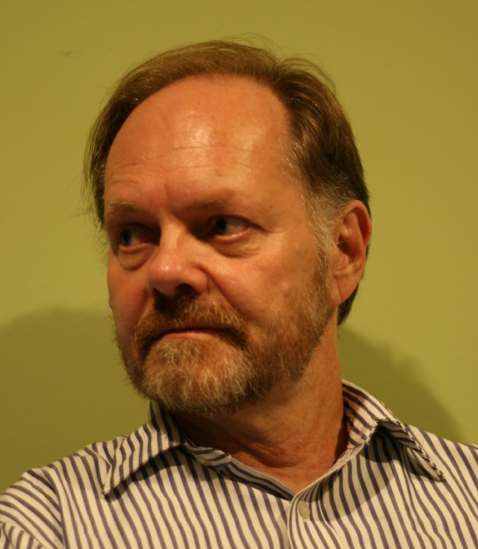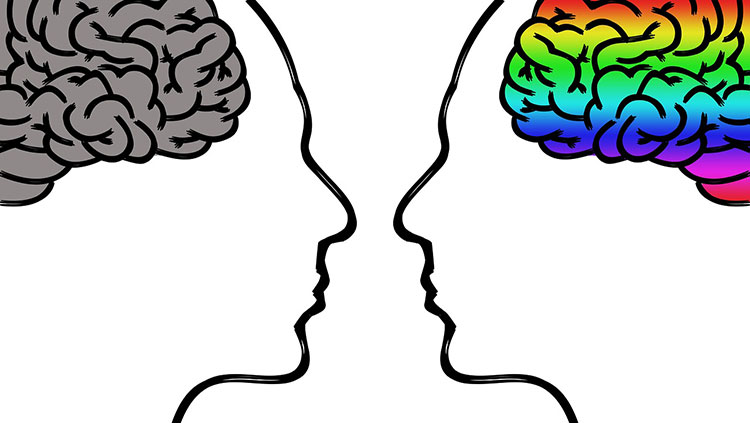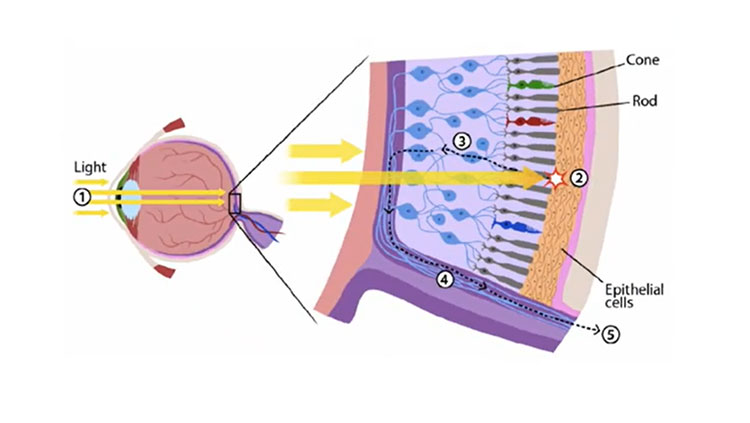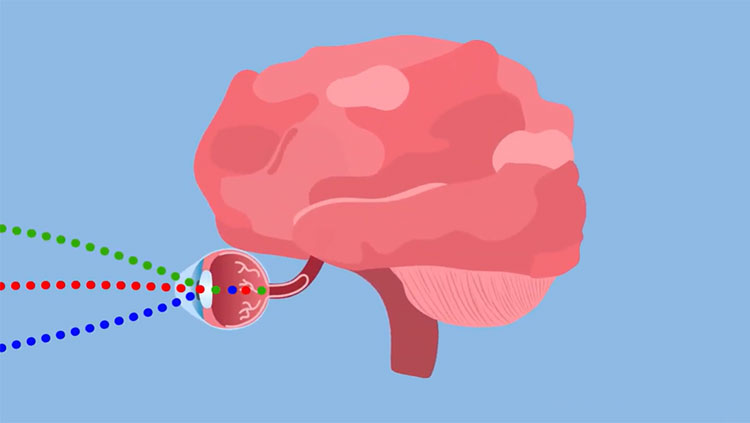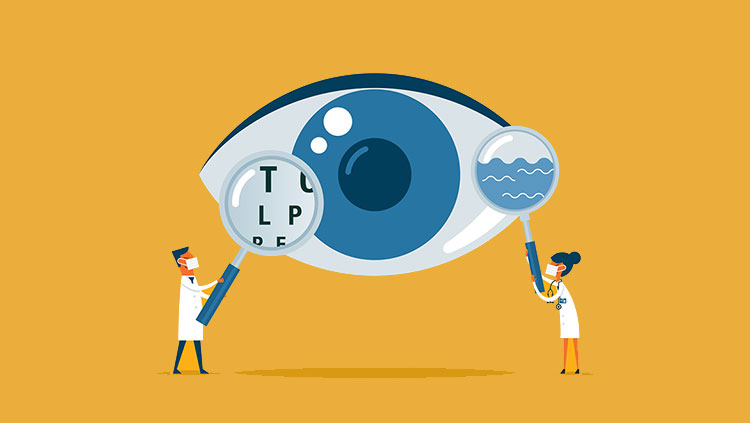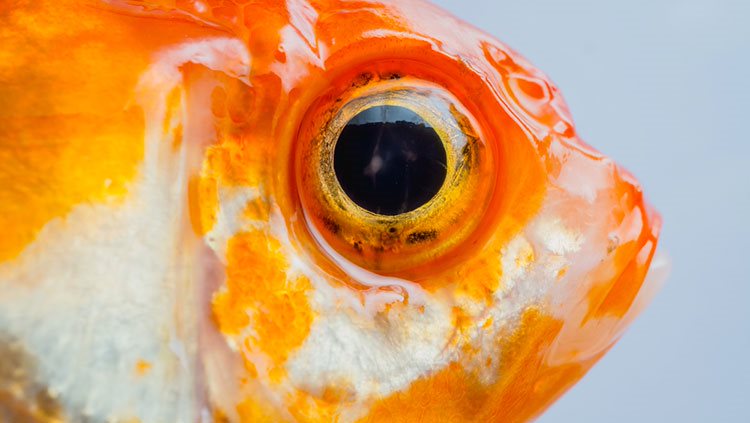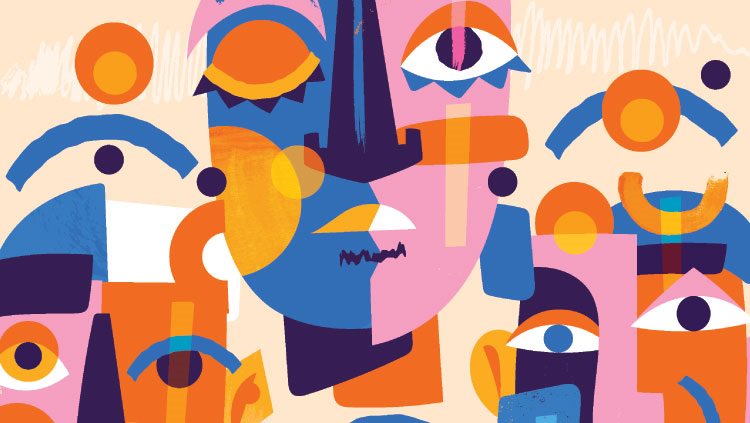The Hollow Face Illusion is spooky. The photo is of a flat sheet of plastic with a facial mask pushed in one side. In this case it's the face of Albert Einstein*. It's not surprising that when illuminated, the shadows give a perception of Einstein's face. The spooky part is that the photo was taken with the face pointing away from the camera — It's as if we are looking at the face from inside the head. But for most of us, it looks as if the face is pointing towards you; that is, the nose is closer to the camera than the rest of the face. Actually, the nose is is furthest away.
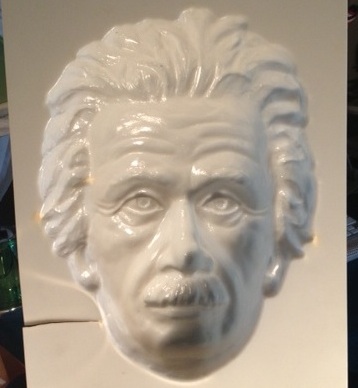
This is the first feature of the hollow face illusion: a "hollow face" that is pointing away from you looks like it's pointing towards you. Spooky. The second feature is spookier. If you walk around a room and watch the stationary mask, the head turns! Or at least it looks that way. The face appears to follow you wherever you travel. Below is a video I made showing this effect. Although the video captures the illusion, the effect is stronger in real life.
The figure below illustrates the spooky effects when you change your viewing direction**. When you view the mask from above you expect to see Albert's forehead. This is what you see in the "normal" view; it's not what you see when the mask protrudes away. When you view form below you expect to see the nose from below. Again, this is what is seen in the normal view, not what's seen when the mask is pointed away.
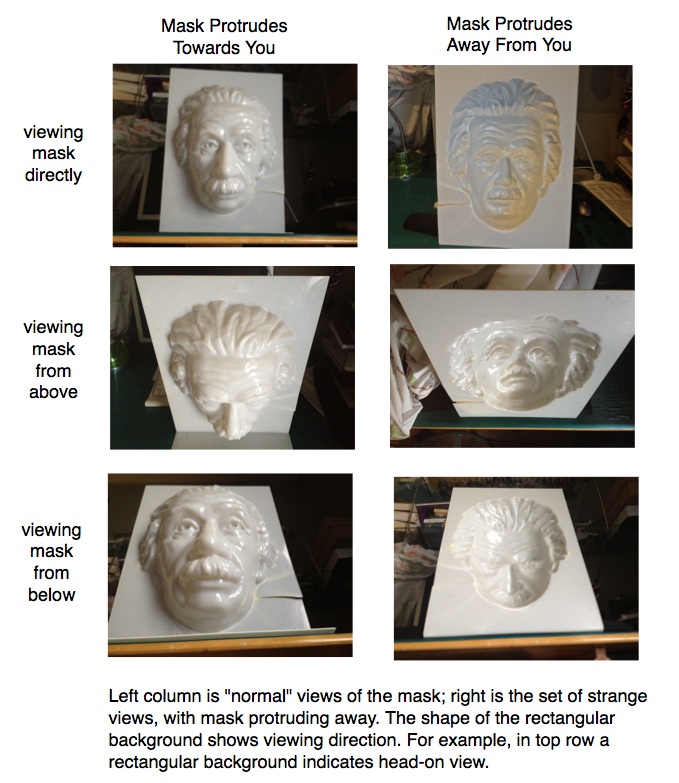
At first the illusion appears magical. Replacing the magic with descriptions of processing in eye and brain gives insights into visual perception. Explanation. The retina is a 2-dimensional structure, but we live in a 3d world. In order to perceive depth and distance, the eye and brain must make informed guesses about the structure of space. The figure below illustrates one important cue: the size of the projection of an object on the retina.
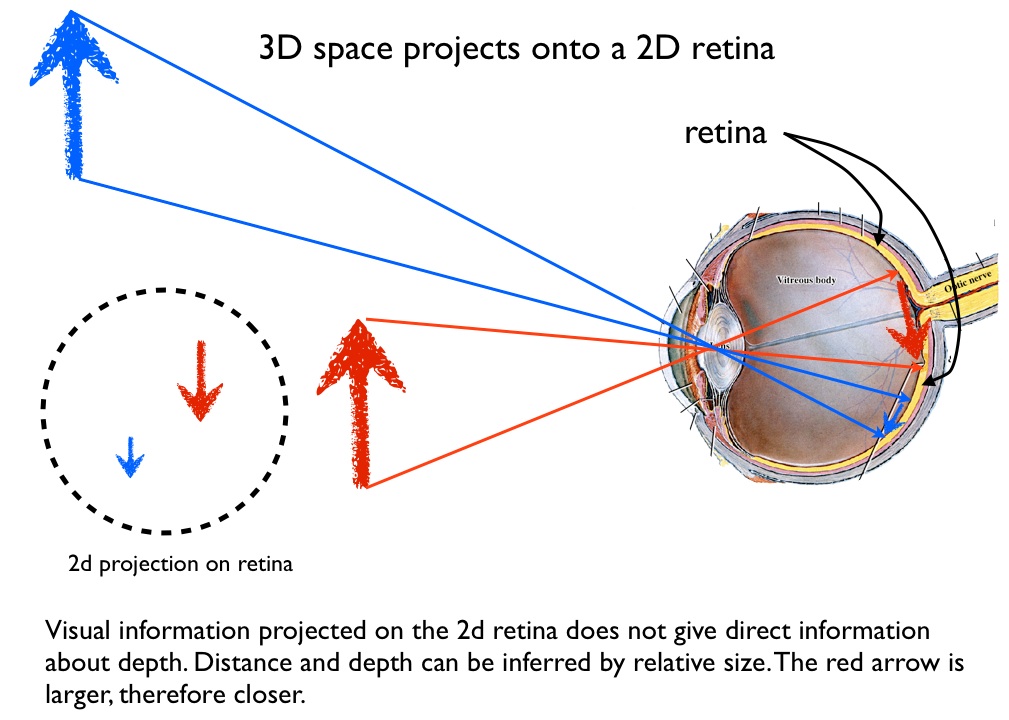
The illustration above shows that if we have good reason to believe that two objects are the same size, the one that creates a larger image on the retina is perceived as closer. The brain uses a multitude of cues to make best-guesses at distance and depth: retinal size, retinal elevation, occlusion of one object by another, relation to objects at a known distance, shadow, perspective distortion, binocular disparity*** and others. Common to all of these cues is that we expect the features of the world to behave in certain ways.
Illusion Part 1: Why does the face appear to be protruding towards you, even when protruding the other way? Two types of information are available from a view of the hollow face: contour information and depth information.
We derive contour information from the sharp transitions in lightness on the image, something like a cartoon. Contour gives us an outline of the face, that is roughly similar to when the face is pointing either direction. This is pure 2D. Depth information comes from gradual shifts in shading. In normal situations, shading comes from the shadows cast by light rays coming from a source, reflecting off of a surface and entering an eye. Since the 3D contour of the surface determines the pattern, we unconsciously (and brilliantly!) infer surface contour from shading patterns.
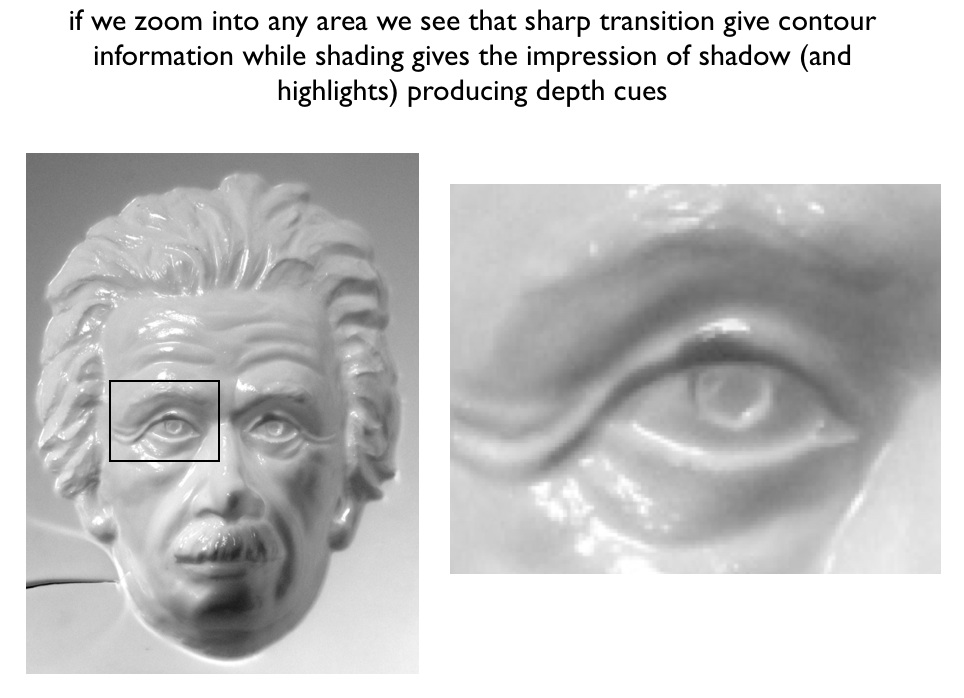
Specifically relevant to the hollow-face illusion, we expect 3d objects, especially faces, to be convex on the surface; that is, to bulge outward. Shadow on a face gives depth cues. A 2D view of the shadowing of an outwardly bulging object illuminated from above is identical to an inwardly bulging object illuminated from below. We generally expect lighting to be from above, and we always expect faces to bulge outwards. In the image below, I've moved the light source around. In both it looks as if the light is coming from top left, but that's not the case. Even knowing the facts does not over-ride the illusion.****
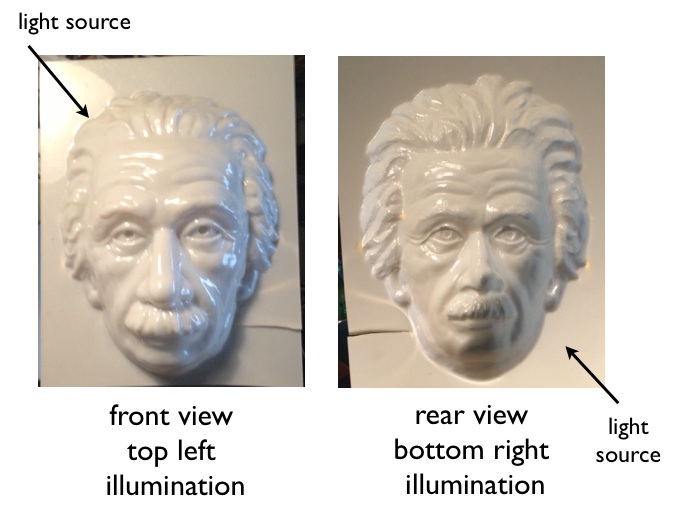
Another way to illustrate how our eyes and brains oportunistically infer 3D from 2D information is to examine an egg carton. Below are photos I took this morning.
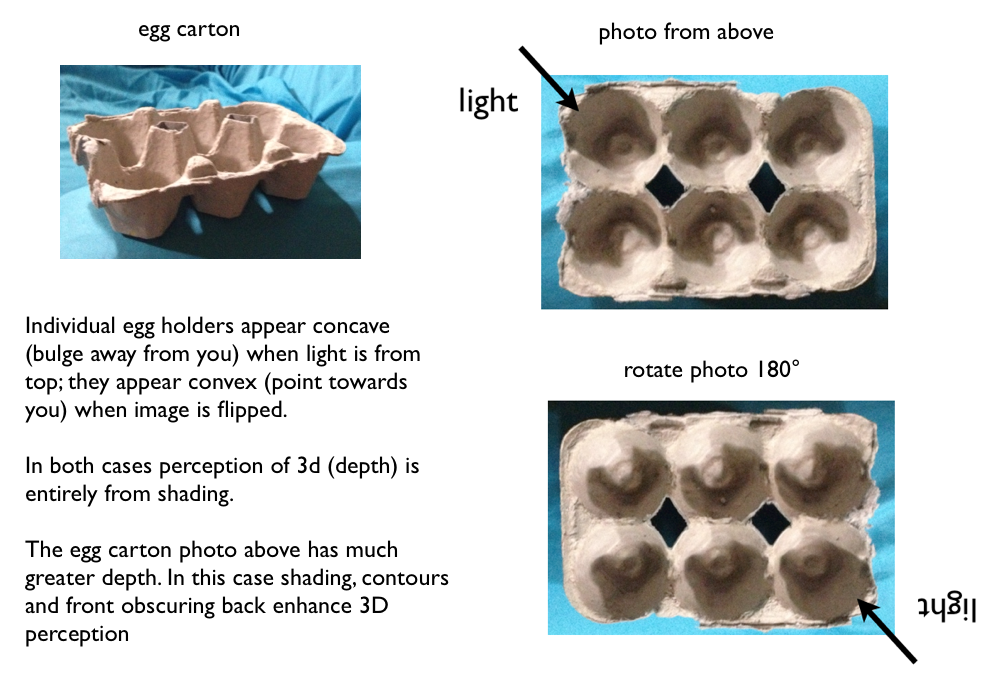
In the overhead photos, the shading gives a rough sense of depth. The egg forms seem to bulge away from you when the light is from the top, but bulge towards you when from the bottom. But the 3D effect is much weaker than for the face. Depth is clear in the photo on the left.
Illusion Part 2: why does the head appear to turn when you move? This is tricky, and is best thought of by considering contours. First, lets consider the two mask images when we are directly in front of the mask. For each the nose is midway between the two sides, appropriate for a frontal view. Now imagine slowly moving to the right, so you are viewing a mask from a 45° angle. For the mask pointing out (a normal face) the nose will be closer to the far side of the face.
This is what you expect if you move and the face is still: you will be viewing the left cheek of the mask. Although the view of the mask is changing, it is consistent you moving and the mask standing still. Your perception correctly interprets the mask as stationary. But, for the inverted face, if you move to the right, the nose will move towards the close side of the face. You will be directly in front of the right cheek!. Your brain does not interpret this change as consistent with your movement. Although you move and the mask is still, the mask appears to move incrementally to get in this position.
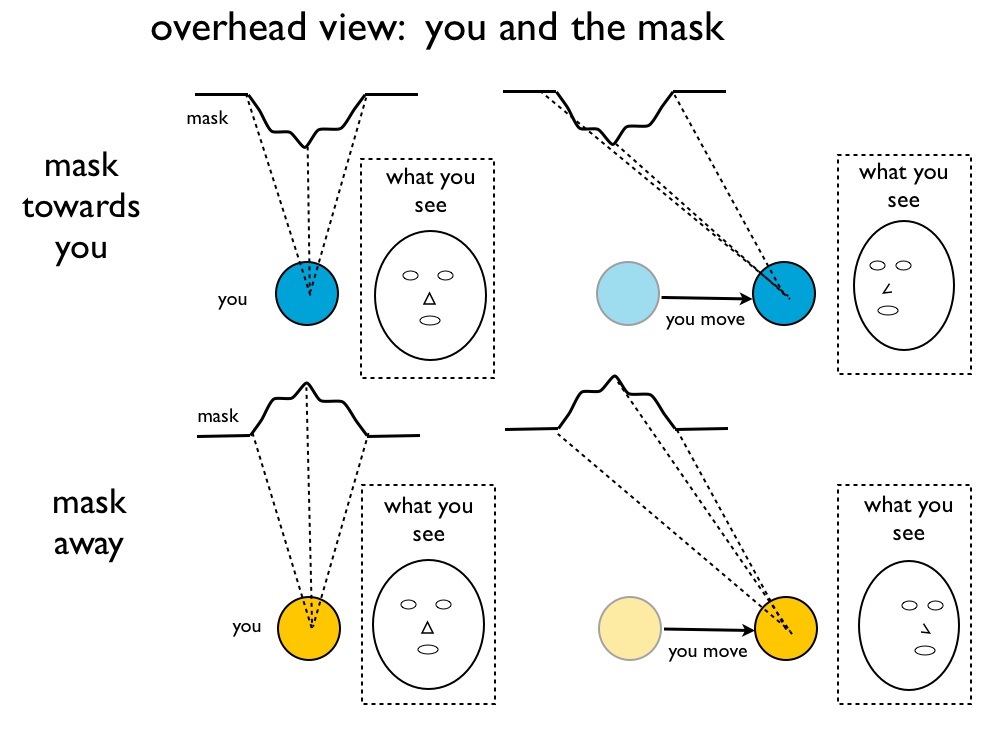
It will appear as if the mask-person is turning his head in your direction, but turning faster than you are moving. This is a tricky concept, but shows that the mystery of the hollow mask is not a mystery. It's an incorrect perception of the world, understandable if you understand the short-cuts used by our visual system.
Summary. Perception of the visual world is a mix of sensory data and opportunistic guesswork. Since we have do not have direct sensory data of depth and distance, visual perceptions of depth and distance rely on short-cuts. Visual illusions, such as the hollow face illusion, reveal the nature of these brilliant-but-sometimes-faulty guesses.
-------------------------------------------* The "Einstein Face" mask was purchased from grand-illusions.com. Interesting and fun shopping. ** Youtube has a number of great demonstrations of the hollow-face illusion. This one is impressive. *** "binocular disparity", the difference in the image coming from the two eyes, is one signal we have for direct distance information. Differences are greater for close objects. Binocular disparity works against the the hollow face illusion. In my experience, the hollow face illusion does not work when I'm closer than about 4 feet, but works again if I close one eye. **** Also, notice that the face looks different in the two "direct" views. This is because the nose appears larger when closer to the camera and smaller when further away. The one on the right doesn't look much like Einstein.
Also In Vision
Trending
Popular articles on BrainFacts.org


